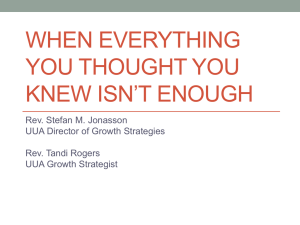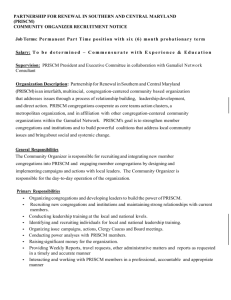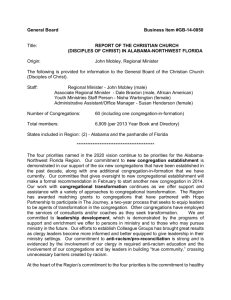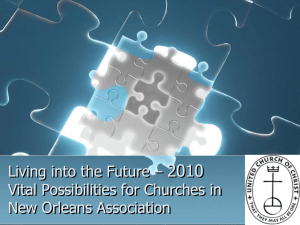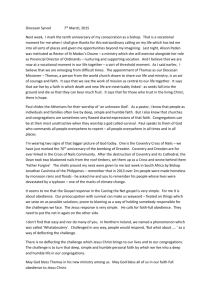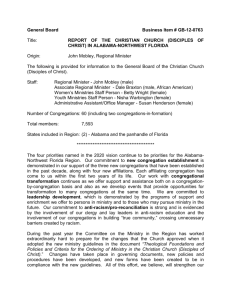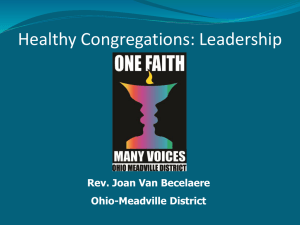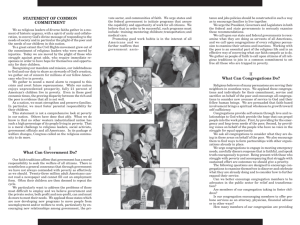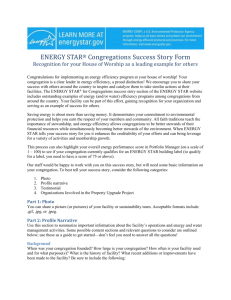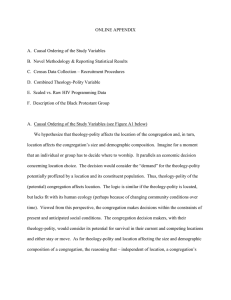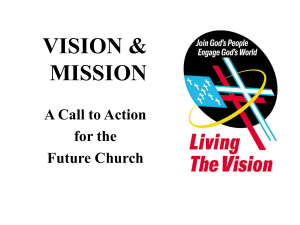Summary of Christianity for the Rest of Us
advertisement
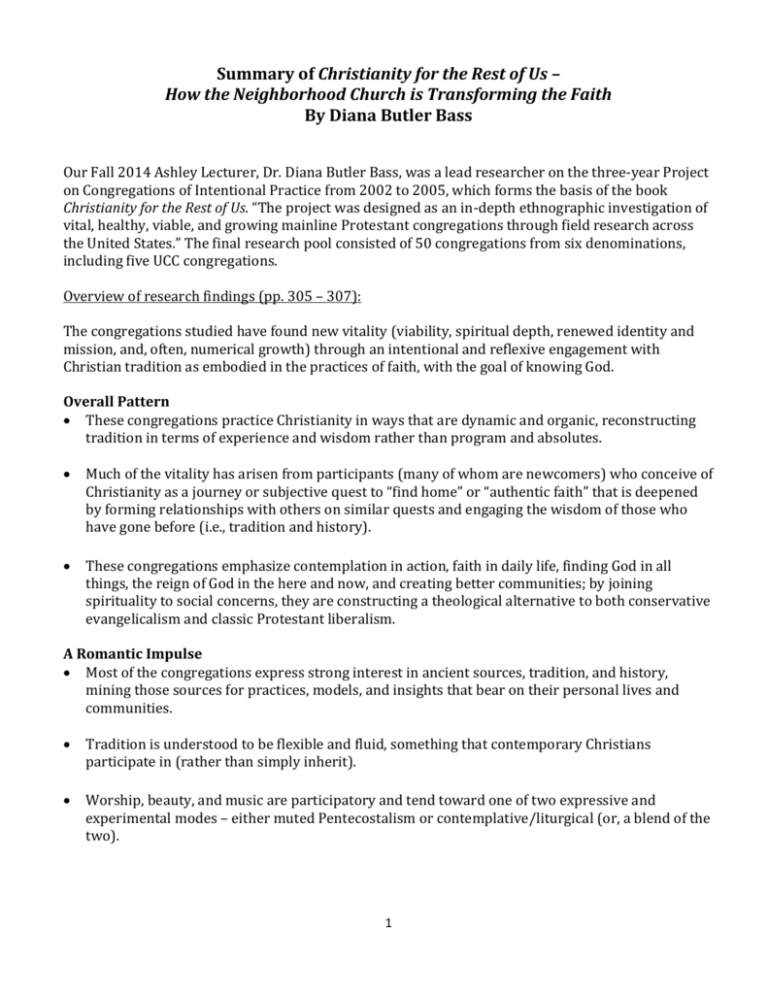
Summary of Christianity for the Rest of Us – How the Neighborhood Church is Transforming the Faith By Diana Butler Bass Our Fall 2014 Ashley Lecturer, Dr. Diana Butler Bass, was a lead researcher on the three-year Project on Congregations of Intentional Practice from 2002 to 2005, which forms the basis of the book Christianity for the Rest of Us. “The project was designed as an in-depth ethnographic investigation of vital, healthy, viable, and growing mainline Protestant congregations through field research across the United States.” The final research pool consisted of 50 congregations from six denominations, including five UCC congregations. Overview of research findings (pp. 305 – 307): The congregations studied have found new vitality (viability, spiritual depth, renewed identity and mission, and, often, numerical growth) through an intentional and reflexive engagement with Christian tradition as embodied in the practices of faith, with the goal of knowing God. Overall Pattern These congregations practice Christianity in ways that are dynamic and organic, reconstructing tradition in terms of experience and wisdom rather than program and absolutes. Much of the vitality has arisen from participants (many of whom are newcomers) who conceive of Christianity as a journey or subjective quest to “find home” or “authentic faith” that is deepened by forming relationships with others on similar quests and engaging the wisdom of those who have gone before (i.e., tradition and history). These congregations emphasize contemplation in action, faith in daily life, finding God in all things, the reign of God in the here and now, and creating better communities; by joining spirituality to social concerns, they are constructing a theological alternative to both conservative evangelicalism and classic Protestant liberalism. A Romantic Impulse Most of the congregations express strong interest in ancient sources, tradition, and history, mining those sources for practices, models, and insights that bear on their personal lives and communities. Tradition is understood to be flexible and fluid, something that contemporary Christians participate in (rather than simply inherit). Worship, beauty, and music are participatory and tend toward one of two expressive and experimental modes – either muted Pentecostalism or contemplative/liturgical (or, a blend of the two). 1 Practices The practices that predominated discussion were: worship, hospitality, discernment, theological reflection, healing, forming diverse communities, testimony, and contemplative devotional disciplines. Practices observed but not necessarily discussed included creativity and the arts, especially innovative uses of music (not necessarily contemporary styles). Practices require commitment (they are “high demand”), but that commitment is typically internally and subjectively driven and not external or authoritarian. Engaging practices elevates the sense of intentionality throughout the congregation that leads to greater vitality and spiritual depth. Public Presence The study congregations often defy “liberal” and “conservative” characterizations. People can find in these congregations a larger goal that allows them to transcend theological and political differences. Diversity appears as a fundamental virtue in all the congregations as a reflection of God’s kingdom and is often tied to the practice of the Lord’s Supper. Social justice and peacemaking are considered important to practices in these congregations and are interwoven with the rest of the practices (especially worship and devotional practices). These congregations express anxiety about evangelism that they perceive as exclusive or fearbased; rather, they focus on personal connections and make modest claims regarding Christian conversion, choosing instead to link evangelism with hospitality, catechesis, and relationships. Leadership The leaders reject managerial, programmatic, and technical models of leadership (although they are knowledgeable about and often trained in such models) in favor of leadership models drawn from Christian history, spiritual traditions, and biblical sources. Leaders willingly borrow across boundaries (mainline – evangelical; Protestant – Catholic; Western Christian – Eastern Christian; and racial divides) in order to further the mission of the church; they rarely avail themselves of denominationally produced materials in favor of creating their own resources from a variety of sources (including the congregation itself). The pastors and key lay leaders often possess spiritual charisma, but that charisma is not used to control the congregation; rather, charisma is shared or dispersed throughout congregational systems and creates grassroots commitment. Leaders initiate and motivate individual and congregational change through narrative; being able to articulate and link their own personal story, the congregation’s story (and that of individuals in the congregation), and the larger Christian story appears to be a primary leadership capacity. 2
